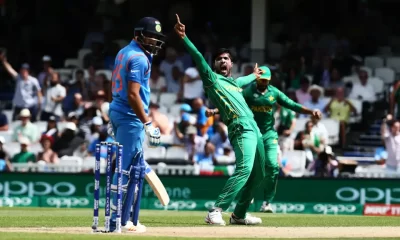
Table of Contents
The International Cricket Council (ICC) is set to introduce a new revenue distribution model that solidifies the Board of Control for Cricket in India (BCCI) as the primary beneficiary. According to a document seen by ESPNcricinfo, the proposed model draws inspiration from the short-lived Big Three takeover in 2014, emphasizing the BCCI’s significant financial advantage over other cricket boards.
Under this model, the BCCI is projected to earn a staggering $230 million annually, accounting for approximately 38.5% of the ICC’s $600 million yearly earnings during the 2024-2027 commercial cycle.
Big Three India, England, and Australia to earn significantly higher than other boards
In comparison, the next highest earner in this model is the England and Wales Cricket Board (ECB), with an estimated income of $41.33 million, equivalent to 6.89% of the ICC’s earnings. Cricket Australia (CA), the third member of the original Big Three, follows closely with a projected income of $37.53 million (6.25%).
Among the remaining nine Full Members, only the Pakistan Cricket Board (PCB) is expected to surpass $30 million, receiving approximately $34.51 million (5.75%). The remaining eight boards will receive less than 5% of the projected pool. Overall, the twelve Full Members will share $532.84 million (88.81%), while the Associate Members will receive $67.16 million (11.19%).
The proposed model relies on the ICC’s estimated revenue of over $3.2 billion from the sale of media rights alone, which included a groundbreaking deal covering five regions worldwide, with the Indian market being the most lucrative. Disney Star*, through a four-year agreement, secured rights in the Indian market for just over $3 billion. Consequently, the BCCI argues that it deserves a more substantial share due to its significant contribution to cricket’s global economy.
The proposed model’s four criteria, termed “component weightings,” determine the distribution among Full Members. These criteria include cricket history, performance in men’s and women’s ICC events over the past 16 years, contribution to ICC’s commercial revenue, and equal weightage for being a Full Member. This structure closely resembles the principles outlined in the Big Three’s position paper from nine years ago.
However, there are slight differences in this proposed model. While each Full Member starts with an equal share of 8.3%, the final percentage is determined by an average weightage of the four criteria, favoring the commercial value each board brings to the global pot. This approach heavily favors the BCCI due to its significant financial impact on the global cricket market.
Also, read: Asia Cup 2023: Sri Lanka and Bangladesh Offer Stands with BCCI
One outstanding issue for the ICC Board and the Finance and Commercial Affairs (F&CA) committee is the allocation of a $100 million emergency fund. If approved, the annual earnings pool would reduce to $500 million, subsequently affecting the individual earnings of Full Members.
Critics argue that the proposed model perpetuates the dominance of the BCCI, which has consistently sought greater returns based on India’s contribution to the cricket economy. However, some anticipate less resistance this time due to the substantial increase in overall media rights revenue since the last cycle. Nonetheless, Full Members are expected to scrutinize the model’s calculations, particularly the weighted components and their transparency.
The ICC aims to receive feedback from Full Members by the first week of May, and the F&CA committee will present a final proposal to the ICC Board for ratification. The approval process is expected to take place during the ICC annual conference in June in Durban.
Also, see:
Meet the ICC Men’s Player of the Month!












